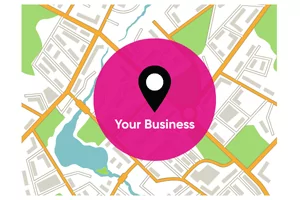Digital marketing in Charlotte is more competitive than ever. Businesses are constantly searching for smarter ways to connect with customers who are nearby, ready to buy, and open to engagement. One strategy gaining serious traction is geofencing - a location-based tool that delivers targeted messages to people when they enter a defined area, like a neighborhood, trade show floor, or competitor's parking lot.
Instead of casting a wide net, geofencing lets companies focus on the right audience at the right time. In this article, we'll explain what geofencing is, why it matters, and how Charlotte businesses can use it to drive leads, increase foot traffic, and boost ROI as part of their broader digital marketing strategies.
Understanding Geofencing in Digital Marketing
At its core, geofencing creates a digital boundary around a physical location. When someone with location services on their device enters that boundary, it can trigger ads, push notifications, or special offers. Unlike traditional advertising, which relies on broad demographics, geofencing narrows the audience to those already in a relevant area- meaning intent is higher from the start.
This technology is especially powerful in Charlotte's bustling business districts, where customer attention is divided. Targeting those already in the neighborhood ensures marketing dollars go further.
Why Geofencing Works for Local Businesses

The benefits include:
- Higher relevancy: Ads match the customer’s immediate context.
- Increased foot traffic: Drive people into stores, showrooms, or events.
- Better ROI: Spend less on wasted impressions by focusing on local, active audiences.
Practical Applications of Geofencing
Here's how businesses in Charlotte might put geofencing into practice:
- Retailers can promote same-day sales to customers walking near SouthPark Mall.
- Event venues can target concertgoers with food and drink specials within walking distance.
- Manufacturers can capture decision-makers during trade shows at the Charlotte Convention Center.
- Restaurants can draw in visitors exploring Uptown with real-time promotions.
Each example shares a common theme: reaching people in the moment, where intent is highest.
How Geofencing Fits Into a Digital Marketing Strategy
Geofencing doesn't exist in a vacuum. It's most effective when combined with other efforts:
- SEO ensures your business shows up when customers search after seeing your ad.
- Paid ads reinforce your message outside the geofence.
- Email and remarketing allow you to re-engage those who interacted with your initial campaign.
By weaving geofencing into the larger digital marketing picture, Charlotte companies create consistent, high-impact touchpoints that guide prospects toward conversion.
Key Metrics to Measure Geofencing Success
Running a geofencing campaign isn’t just about impressions—it’s about measurable results. Businesses should track:
- Click-through rates (CTR): How often people interact with your ads.
- Foot traffic lift: Did visits to your store increase during the campaign?
- Conversions: Are targeted users making purchases, booking services, or engaging further?
- Cost per acquisition (CPA): How much you’re paying per new lead or customer.
For example, if a Charlotte café geofences a nearby office complex and sees a 20% increase in lunchtime orders, that’s real, trackable ROI.
Common Challenges and How to Overcome Them
Geofencing is powerful, but it isn’t without challenges. Accuracy depends on user devices and whether customers have location services enabled. Some audiences may experience ad fatigue if the same message is shown repeatedly.
The solution lies in refinement: adjust your boundaries, rotate creative assets, and test different dwell times. Rather than treating geofencing as a “set it and forget it” tactic, think of it as a living strategy—one that evolves alongside customer behavior.
The Charlotte Advantage
For businesses here, the opportunity is clear. Charlotte’s growth means more customers, more competition, and more noise. Geofencing gives you the ability to cut through the clutter with precision. Whether you’re a manufacturer targeting B2B buyers, a retailer trying to drive store visits, or a service provider looking to stay top-of-mind, geofencing delivers a competitive edge in an increasingly local-first world.
Geofencing isn’t just another digital marketing trend - it’s a strategy that aligns perfectly with how today’s customers behave. In a city like Charlotte, where audiences are constantly on the move, location-based targeting helps businesses reach the right people at exactly the right time.
By integrating geofencing into a broader digital marketing plan - alongside SEO, paid advertising, and content marketing - businesses can generate more leads, drive foot traffic, and see stronger ROI.
If you're ready to explore geofencing for your business, now’s the time to start. The market is only getting more competitive, and those who act early will have the advantage.